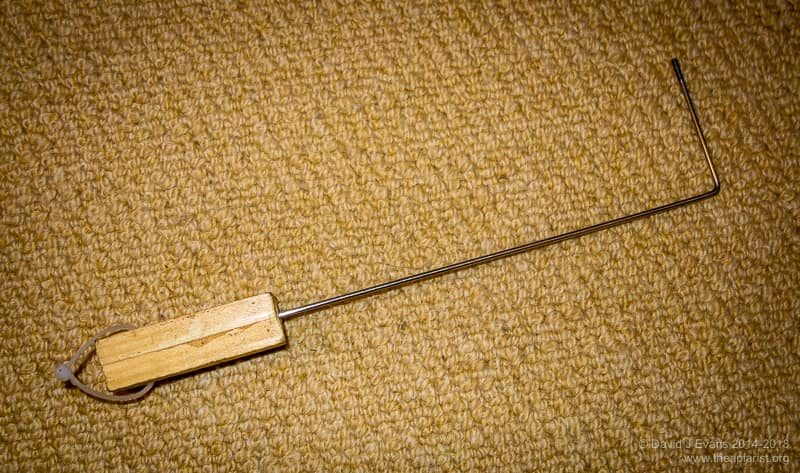Bring out your dead
It’s midwinter. There’s very little to do in the apiary. Time is probably better spent planning and preparing for the coming season (and drinking tea in the warm).
However, there are a few jobs that shouldn’t be forgotten.
Let the undertakers do their work
The first job is to ensure that the hive entrances are clear. This allows bees to readily exit and re-enter the hive for ‘cleansing’ flights during warmer days. During these days the bees will also remove some of the many corpses that accumulate during the winter. If the hive entrance is clear these can be removed easily. If the entrance is blocked they continue to build up and – on warm days – you can hear a panicky roar of trapped bees from inside the hive.
Don’t worry about the loss of these bees. It’s what happens. The colony goes into the autumn with perhaps 30,000 adult workers. Four months later, at the end of December, there may be only about one third of this number remaining. Brood rearing is limited during this period (and at times non-existent), but picks up in early January.
Attrition rate
Even assuming no brood rearing, this means that 150-200 bees a day are expiring. If they are rearing brood, even at a significantly diminished rate, it means that more than 200 bees a day are dying.
For comparison, 300 bees is about a ‘cupful’ … the number you’d do a Varroa count on. Imagine dropping a cupful of dead bees on the hive floor every day for a fortnight. Unless these corpses are cleared away the hive entrance gets blocked. This is what the ‘undertakers’ clear.
On calm warm days you can find the corpses littered on the hive roof, or in front of the entrance, dropped there by workers carrying them away from the hive.
Since ‘flying’ days may be infrequent at this time of year and/or bees have other jobs to do, like go on cleansing flights or collect water, they may not carry the corpses very far … don’t be alarmed by the numbers of corpses around the hive entrance.
A bent piece of wire to the rescue
I mainly use kewl floors with a dogleg entrance slot (see the top image on this page) that reduces robbing by wasps and negates the need for a mouse guard. I’ve fashioned a simple piece of bent wire to keep the entrance slot clear of corpses on my irregular visits to the apiary during this time of the year.
I’ve only ever had problems with large, double-brood colonies after very extensive cold periods (~4 weeks with hard frosts every night) when the entrance has got blocked. One colony I managed to save despite it showing signs of Nosema after the bees were trapped for several days.
It takes just seconds to check that the entrance is clear and gives considerable peace of mind. If you use mouseguards it’s worth checking the holes aren’t all blocked after an extended cold period.
Next week I’ll discuss the other important winter check … are there enough stores remaining to stop the colony starving?
Colophon
Anyone familiar with Monty Python will recognise the post title.
This was one of the well-known scenes from Monty Python and the Holy Grail, a 1975 film parody about the Arthurian legend and a low-budget quest for the Holy Grail. The film usually ranks close to the top in surveys of the best comedies of all time, with another Monty Python film (The Life of Brian) often topping the tables.
In the film there’s a further scene (A self-perpetuating autocracy) which involves a political argument with interesting parallels between the public perception {{1}} of a colony of bees and the biological reality. This is topical, with the recent Deloitte report on women in leadership roles holding back the careers of other women they perceive as a threat.
Perhaps a topic for a future article … ?
Queen bees and the self-perpetuating autocracy.
{{1}}: Not beekeeper perception.



Join the discussion ...